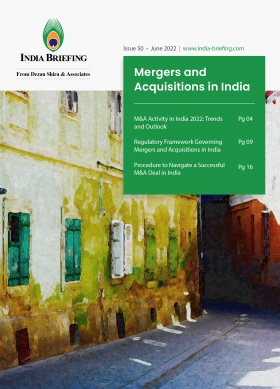India’s Tier 2 and Tier 3 Cities: Are They Right for Your Business?
To a foreigner, the terms tier 2 and tier 3 might suggest that these cities will become tier 1 cities in the near future.
However, this is not necessarily the case – Indian cities are classified purely on the basis of their population size.
Accordingly, foreign companies that are interested in locating in a tier 2 or tier 3 city should carefully consider their options: lower tier cities offer comparatively cheap labor and affordable real estate, but setting up in these cities also comes with challenges.
What are tier 2 and tier 3 cities?
According to the government, cities with a population in the range of 50,000 to 100,000 are classified as tier 2 cities, while those with a population of 20,000 to 50,000 are classified as tier 3 cities.
In a populous country like India, cities of this size are common and does not correlate with any potential for economic development.
Some tier 2 and tier 3 cities, however, have shown potential to become a business destination.
Generally, these cities have several industrial clusters, are situated in business-friendly states, and are well-connected to other major economic hubs.
The most significant edge these cities have over larger cities, is their economical real estate, labor, and service costs. Indeed, several cities have developed or are developing infrastructure to support large-scale economic activity and are major contributors to their state GDP. For instance, in recent years, Lucknow in Uttar Pradesh has attracted several millions in investments and expanded its local economy. India’s ambitious double down on building multi-modal logistics networks are incorporating many lower tier cities in their infrastructure blueprint, such as Ludhiana (Punjab) and Indore (Madhya Pradesh).
Moreover, the pandemic has accelerated the movement of metropolitan dwellers to tier 2 and tier 3 cities to get away from polluted and crowded environments and access affordable housing and competitive education and job opportunities. Some of the emerging real estate markets with a robust housing segment include Kochi, Indore, Chandigarh, Lucknow, Amritsar, Jaipur, Ludhiana, among others.
Tier-wise classification of centers based on population
|
Tier |
Population |
|
Tier 1 |
100,000 and above |
|
Tier 2 |
50,000 to 99,999 |
|
Tier 3 |
20,000 to 49,999 |
|
Tier 4 |
10,000 to 19,999 |
|
Tier 5 |
5000 to 9999 |
|
Tier 6 |
Less than 5000 |
Source: Reserve Bank of India – based on 2011 census
Population-group wise classification of centers
|
Rural center |
Population up to 9999 |
|
Semi-urban center |
10,000 to 99,999 |
|
Urban center |
100,000 to 999,999 |
|
Metropolitan center |
1,000,000 and above |
Classification of Indian cities based on house rent allowance (HRA) used by the Inland Revenue Service (IRS)
|
HRA classification |
City |
|
X (Tier-1) |
8; Ahmedabad, Bengaluru, Chennai, Delhi, Hyderabad, Kolkata, Mumbai, and Pune |
|
Y (Tier-2) |
79; Vijayawada, Warangal, Greater Vishakhapatnam, Guntur, Nellore, Guwahati, Chandigarh, S.A.S. Nagar, Mohali, Durg-Bhilai Nagar, Raipur, Rajkot, Jamnagar, Bhavnagar, Vadodara, Faridabad, Gurgaon/Gurugram, Srinagar, Jammu, Jamshedpur, Dhanbad, Ranchi, Bokaro Steel City, Belgaum, Hubli-Dharwad, Mangalore, Mysore, Gulbarga, Thiruvananthapuram, Thrissur, Malappuram, Kannur, Kollam, Gwalior, Bhopal, Jabalpur, Ujjain, Amravati, Aurangabad, Nashik, Bhiwandi, Solapur, Kolhapur, Vasai-Virar City, Malegaon, Nanded-Vaghela, Sangli, Cuttack, Bhubaneswar, Raurkela, Pondicherry/Puducherry, Amritsar, Jalandhar, Ludhiana, Bikaner, Jodhpur, Kota, Ajmer, Salem, Tiruppur, Tiruchirappalli, Madurai, Erode, Moradabad, Meerut, Aligarh, Agra, Bareilly, Allahabad, Gorakhpur, Varanasi, Saharanpur, Noida, Firozabad, Jhansi, Dehradun, Asansol, Siliguri, Durgapur |
|
Z (Tier-3) |
The remaining cities and towns in various States and Union Territories which are not covered by the classification as ‘X’ or ‘Y’ are classified as ‘Z’. |
When should businesses consider a tier 2 and tier 3 city?
If a company has sufficient time, money, and resources to grow their business independently, it may be worth setting up in a lower tier city to obtain cheap real estate and labor.
This means the company needs to be prepared to invest in setting up basic infrastructure and logistics, train local labor in fundamental tasks, and learning to function outside a well-developed business ecosystem.
If a company has presence in a tier 1 city, it could consider moving some of its operations to a nearby tier 2 or tier 3 city to cut operational costs.
A business could explore moving staff engaged in back-end and related functions to a nearby emerging city.
Similarly, manufacturing activities could be moved to smaller cities, while management functions could continue to operate out of the tier 1 city.
If there is an existing industry cluster that is relevant to the company’s business portfolio, a company may find tier 1 capacity at tier 2 or tier 3 costs.
Many of the smaller cities have carved a niche for certain specific industrial activities.
It is important for the foreign business to ensure that its business activity aligns with the local industrial ecosystem.
This article was originally published on January 11, 2018. It was last updated October 28, 2022.
About Us
India Briefing is produced by Dezan Shira & Associates. The firm assists foreign investors throughout Asia from offices across the world, including in Delhi and Mumbai. Readers may write to india@dezshira.com for more support on doing business in in India.
We also maintain offices or have alliance partners assisting foreign investors in Indonesia, Singapore, Vietnam, Philippines, Malaysia, Thailand, Italy, Germany, and the United States, in addition to practices in Bangladesh and Russia.
- Previous Article Everything You Need to Know About Digital Banking Units in India
- Next Article India’s Tax Authority Extends TDS Filing Deadline for Non-Salary Transactions to Nov. 30








